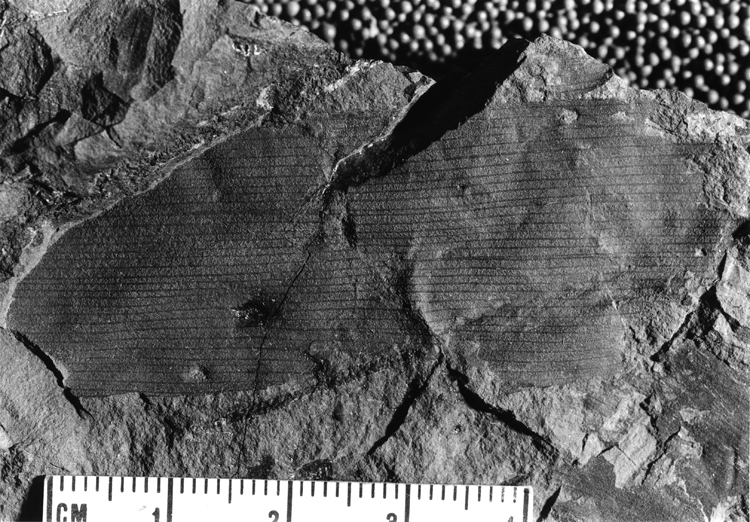Locality
From Hollick (1930) (p. 61-62)
"Yukon River, north bank, at Williams mine (original No. 2AC284); collected by A. J. Collier and Sidney Paige in 1902 (lot 2985)."
Description
From Hollick (1930) (p. 61-62)
"Leaf of unknown size and shape; nervation pinnate, parallel; midrib strong; secondary nerves fine, simple, all of same rank, approximately 1 millimeter apart."
Remarks
From Hollick (1930) (p. 61-62)
"This species has been found only in fragments, but these possess well-defined characters that show them to be leaves of a monocotyledonous plant resembling the Tertiary species Cannophyllites antiquus Unger (1868) (p. 15 (139), pl. 1, fig. 2) from Croatia, except that the nervation in this species is more ascending than in ours. The secondary nerves in our species apparently start at right angles from the midrib, then, at a short distance away, curve sharply and straighten out to a more or less horizontal position, similar to this character of the nervation in Musophyllum complicatum, Lesquereux (1874; 1878) (p. 418; p. 96, pl. 15, figs. 1 - 6) from the Eocene of Wyoming. Fragmentary remains of this species from the Miocene of the Yellowstone National Park, that show the same character, are also described and figured by Knowlton (1899) (p. 686, pl. 83, fig. 1). In other respects, however, the nervation differs from ours. In Lesquereux's specimens the nerves are often forked near the midrib, and in Knowlton's they are indicated as of two ranks, while in our specimens they are apparently simple and uniform throughout. In two places only are there obscure indications of forking or coalescing of the nerves - in each place at a considerable distance from the midrib and presenting the appearance of an incidental rather than a characteristic feature.
So far as I am aware the only plant remains of similar character heretofore reported from any Cretaceous deposits are Cannophyllites septentrionalis Nilsson (1832) (p. 346, pl. 1, fig. 9) from Sweden, and Canna? magnifolia Knowlton (1917) (p. 254, pl. 36, fig. 3) from the Vermejo formation of southeastern Colorado. The species that apparently resembles ours more closely than any of the others, however, is Zingiberites undulatus Heer (1869) (p. 64, pl. 17, figs. 1 - 3) from the Miocene of the Baltic provinces, with which at least generic relationship can hardly be questioned."
